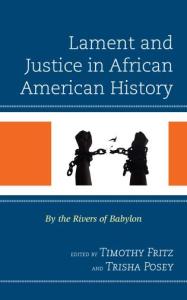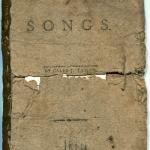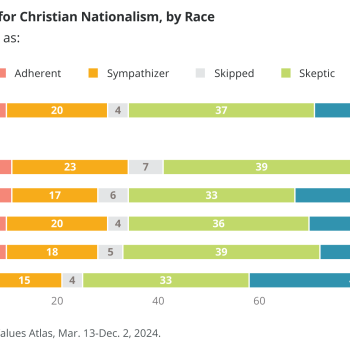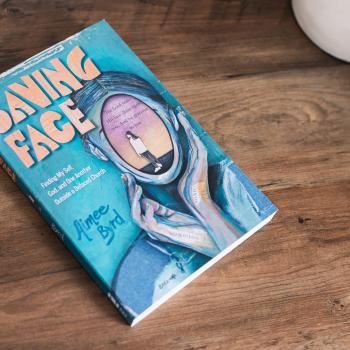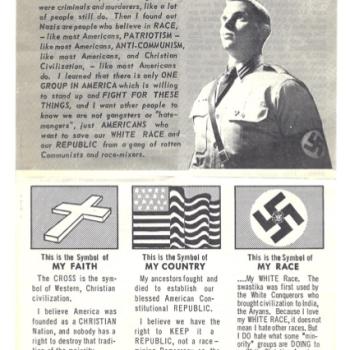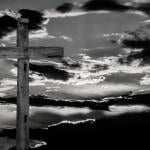Last month, I traveled to Richmond for the Presbyterian Church in America’s General Assembly. Otis Pickett, the University Historian at Clemson University, asked Dr. Malcolm Foley, Dr. Greg Perry, and I to present on a panel about our recent book By the Rivers of Babylon: Lament and Justice in African American History. I had some reservations.
For one thing, for the past several years I have not attended the PCA church where I am a member. (I have very happily been communing at an Anglican fellowship). For another, recent kerfuffles did not make the PCA seem like an especially hospitable setting to talk about Black history—or really to learn anything. But Otis, if you know him you know, is persistent and his unwavering heart for the brothers and sisters within that denomination convincing. “These are your people,” he said. They are, in fact, for better or for worse.
It’s not the first time Otis has convinced me to go to General Assembly. The last time, in 2015, we spoke to a packed audience about racial justice to great enthusiasm and excitement. Then, we could imagine a different sort of PCA, a different sort of church, one that truly loved God’s word and loved all of God’s people and creation. It felt hopeful. We were breaking through. And then, 2016 arrived, and with it the mean impulses normalized and even sanctified. It’s been disheartening and scary. So this time we were not going to talk about “Presbyterians and Race Relations” with a spirit of repentance and hope. Instead, we talked about lament. It wasn’t a packed house this time, there was no pervasive spirit of optimism. But I trust the Holy Spirit was present. And there were many, many good (mostly) men and women there: folks who grieve where the PCA and evangelicalism are at present, faithful, honest shepherds.
Otis grounded us in the need for lament, personally and communally, while Greg offered a case study and praxis for church lament. (Malcolm ended up not being able to make the trip). My comments, on lament and anger are below. Let me know what you think.
…
Thank you, Otis, it’s so good to be here with you and Greg, Malcom in absentia, and all of you. I’m grateful to the Lord. And humbled, because this afternoon I am going to talk with you about the second aspect of lament—complaint or questioning—anger, really. And no not the online vitriol, the pushing and shoving, the simmering resentments we experience all too often right now in American life. But the godly, holy kind. In their book Cry of the Soul, Dan Allender and Tremper Longman call this righteous anger. “Righteous anger,” they write, “warns, invited, and wounds for the greater work of redemption. It is full of strength…permeated by sadness that is rich in desire and hope.” (66) This anger is not a sin as Psalm 4 reminds us: “Be angry and sin not.”
And here again, the historical Black experience has so much to teach us. It has so much to teach us because, as Soon-Chan Rah simply puts it, “Lament is the language of suffering.” (Soon-Chan Rah, Prophetic Lament: A Call for Justice in Troubled Times 22.)
We often think of suffering laments as whispers in hospital rooms, weeping on couches drenched with tears—and as we’ve heard it is— but sometimes it is hot: fast, desperate words or a seething silence or impassioned questions. We think of David, we think of Job, of Hannah. The psalms—Jesus’ prayer book—offer a permissive model here. Before God, these, too, are beautiful laments, laments that draw us to action filled with hope.
Too often in our current cultural moment, anger is misdirected: our helplessness and fear come out as vicious violent attacks on one another, a frustration with strangers, shortness with loved ones, online screeds. This anger refuses to turn to God, but rather, Allender and Longman write “feels righteous is taking justice into our hands…we become vigilantes.” I think we see this so much right now, in our churches, homes, and communities. Or—our anger is suppressed. (Barely). Ignored, theologically packaged up to make sense. As a pastor-friend of mine says: If you stuff your anger, it just comes out sideways.
But biblical wisdom directs us, as the late Tim Keller admonished, to pray our feelings, including anger. Take it all, the unspeakable, and be human before God, let the Holy Spirit groan on our behalf.
In this way, the outpouring of wrenching pain before God is transformed, as Rah writes, into an “act of protest.” The lamenter,” he continues,” is allowed to express indignation and even outrage about the experience of suffering.” (45) Lament is not an expression of neat theodicy, but wailing, screaming, pounding fists on pulpits. It is raw— both and personal and communal, even, as Kathleen O’Connor points out, “national.” This shared lament usually comes in response to historical injustice and serves as a collective balm and a catalyst for change within a theological frame. In the American context, we see this nowhere as clearly as within the Black Christian tradition, particularly within the long Black freedom movement.
*A Note: There is some danger here that we inadvertently sacralize historical Black suffering. It is not a spectacle for observation, nor does it provide any absolution. Even as we lament, Rah cautions, “lament is not simply the expression of sorrow in order to assuage feelings of guilt and the burden of responsibility.” (206) We must be cautious to observe respectfully and responsibly.
What can we learn from Black historical lament? During enslavement and Jim Crow, of course, and even today, Black expressions of anger were quite dangerous, even deadly. (And forget vigilantism or enacting premature justice). But before the God who Hears, and in community–the church– Black Christians grieved before God: questioning, complaining, groaning with centuries of accumulated sorrow. How long, Oh Lord? They lamented —they raged, even—and their suffering transformed into a powerful, righteous movement for justice and redemption. Laments of complaint, we see, lifted before our God, can become just action to build the Kingdom of God. Let’s look, briefly, at an example.
A Historical Example
During the civil rights era, as in generations before, Black Americans were murdered by white supremacists and their hideous idolatries. This afternoon I want to see what we can learn from the tragic story of James Chaney (the book chapter included Emmett Till and Jimmie Lee Jackson as well). As most of you know, James Chaney was one of the so-called MS 3, killed during Freedom Summer, that heady time in 1964 when young people, Black and white, set out to fulfill the promise of democracy in America, to embody the beloved community.
“The tragedy of our racial history,” Rah, again, asserts, “requires the lament of the funeral dirge.”[i] It is the place of honest lament, a space that “does not allow for the denial of death nor…culpability in that death.”In this case, the dead bodies, the fact of Andrew Goodman, Mickey Schwerner, and James Chaney’s slain corpses, cannot be denied, nor the forces that killed them.[iii]
Unlike Schwerner and Goodman who had come from northern cities, Meridian Mississippi was Chaney’s hometown. He lived there when he saw in JET magazine the mutilated corpse of Emmett Till, he attended a segregated school there, he joined the NAACP and CORE as a high schooler. Then, on June 21 1964–almost 60 years ago—the first day of Freedom Summer, Chaney went, with Goodman and Schwerner to Mt. Zion Methodist, a church in Neshoba County that had hosted a Freedom School and subsequently been burned to the ground. The charred church was a fiery reminder of the deranged determination of some white Mississippians to protect the white supremacist system. It was also a trap. Leaving Mt. Zion in a blue Ford station wagon, the three civil rights workers were detained by police, for some purported automotive infraction, and taken to the Neshoba County jail in Philadelphia. Local Klansmen alerted, the kids were released only to be immediately kidnapped and murdered. As Fannie Lee Chaney, James’ mother simply put it, “J. E.,” as she called her son, left one day and “never came back.”
Forty-four days and a federal investigation later, Chaney’s body was unearthed. In his autopsy report, Dr. David Spain stated: “In my extensive experience of 25 years as a Pathologist and a Medical Examiner, I have never witnessed bones so severely shattered.” The broken body was prepared for a funeral, held on Aug7 1964. And here we bear witness to the dirge, the lament of honest anger.
It was a warm Friday evening when the mourning community gathered at the stone First Union Missionary church. The service began with a prayer, a theological anchoring calling out to “God, our help in ages past, our hope for years to come…Thou the creator of all mankind and the Judge of all men, Oh God, who comforts the hearts of all mankind.”
Then, David Dennis of CORE, clad in a denim work shirt, stood to offer remarks. “Sorry,” he began, “but I’m not here to do the traditional thing that most of us do at such a gathering.” He was angry, righteously so. “What I want to talk about is really what I really grieve about,” he continued, light blue eyes sharp, “I don’t grieve for Chaney because, in fact, I feel he lived a fuller life than many of us will ever live.” Rather, he went, he grieved for “people who don’t care, those who do care but don’t have the guts enough to stand up for it, and people busy up in Washington and other places using my freedom and my life to play politics with.” Voice clipped with anger, Dennis gave full expression before God to the people’s honest lament. “I’m getting sick and tired. I’m sick and tired of going to memorials. I’m sick and tired of going to funerals.” He continued, “I’m not going to stand here and ask anybody in here not to be angry tonight. Yeah, we have love in our heart—we’ve had it for years and years in this country…” He trailed off, repeating in a quiet murmur, “I’m sick and tired of that.” From the pews, a woman’s voice called back to Dennis, “I am too!”
Another woman sick and tired was Fannie Lee Chaney. About a week later she spoke, standing in front of Mt. Zion Methodist. “Well, you all know that I am Mrs. Chaney, the mother of James Chaney,” she intoned evenly, “You all know what my child has done. He was trying so hard and he had two fellows from New York…” “Did you all know they came here to help us?” she continued, voice rising, “They died for us. They died for us. Now, is we gonna let this be in vain? I can’t let my child’s work go in vain… Don’t let those children’s life go in vain. They dead. Don’t let their work die…You all don’t know…It’s hard. It’s hard. But every time there is something about freedom–I go. I got to go…And here I am.”
In showing up, in voicing her anger in honest lament, Chaney insisted that God hears and cares. And she called others to not only to grieve with her but to do the holy, faithful work. To go, for freedom. Vengeance belongs to the Lord, but righteous anger, communal lament, offers us the promise of energy and peace for repair and healing.
So: What do we see?
#1: Complaining and questioning Lament is honesty before God, a sign of faith. Our unfiltered, anguished, incoherent our, sick, tired hearts go to and before our God, who loves us and bends His almighty ear to hear. Psalm 62 reminds us: “Trust in him at all times, O people; pour out your heart before him; God is a refuge for us.” Wow. Thank you, Lord.
Don’t ignore it your anger. As Cole Arthur Riley, puts in it Black Liturgies: “Anger is an acceptable form of grief. You don’t have to make your emotions palatable for those who are unmoved. Rage isn’t the curse; Apathy is.”Or, from Allender and Longman: “Only the absence of anger is noteworthy as an indication that something is terribly wrong.” We weep, we rage, we care. And care for one another.
#2 This lament may begin alone but can also be brought into community: with one another and for one another. Fannie Lee Chaney joined in lament with Dr. Carolyn Goodman, Andrew Goodman’s mother. They stayed in touch, forever bonded by trauma and loss, comforting each other and pushing for freedom. As her son remembered: “They carried a burden for a long time, knowing that your sons were murdered and the murderers were out on the streets going free…Strong women…They were able to endure, and continued to have faith. They never lost faith.”
#3: Lastly, this angry lament before God, with one another, propels us to action. To the work of love. So let’s remember the church filled with those mourning James Chaney’s murder 60 years ago. Let’s join them—grieving Chaney, yes, still, George Floyd, Ahmad Arberry, Breonna Taylor, the young men and women of our communities, our own losses. Perhaps it will inspire us, as is has our Black brothers and sisters for so long—to righteous anger, persistent faith and holy action in our day.


